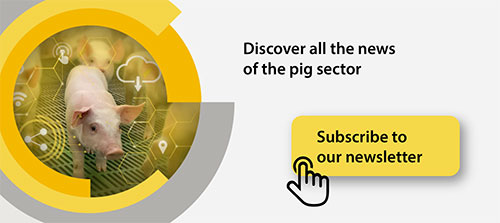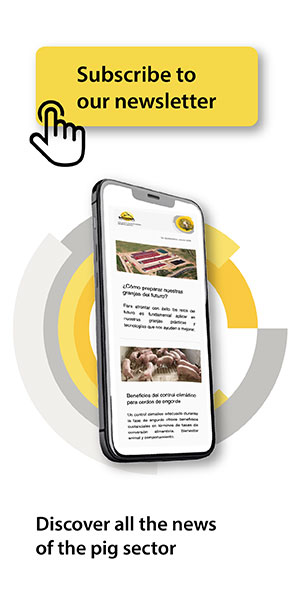Blog
Blog
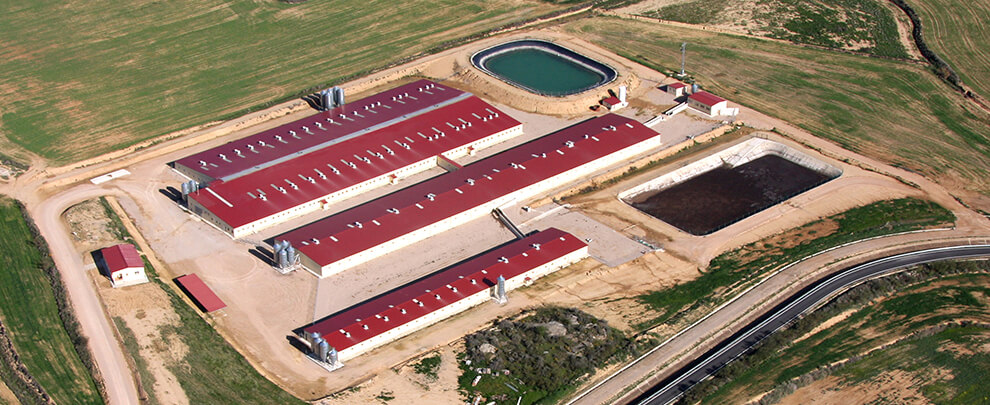
How do we prepare our farms for the future?
08th July 2025 - News
Óscar Toledano. Rotecna Sales Manager.
Most farmers tell us that their main challenges are the environmental sustainability of pig farming, the lack of generational replacement and labour, the economic viability of farms, maintaining good animal health and changes in meat consumption trends. To successfully face these challenges, we must apply practices and technologies on our farms that help us improve each of them.
SUSTAINABILITY
To minimise the environmental impact of our activity, we must reduce our water and carbon footprint, GHG (greenhouse gas) emissions, and atmospheric pollutants such as ammonia, as well as avoid the contamination of aquifers due to incorrect use of slurry. To this end, it is essential to make efficient use of feed and water, to maximise the use of feed protein by the animal, to empty the pits of the warehouses as often as possible, to separate the liquid and solid phases of the slurry, to acidify or cover the slurry ponds, to distinguish the different nutrients in the slurry and to apply them in the correct dose at the right time, according to the needs of the crops, which allows minimising the evaporation of ammonia by using it at ground level, buried or diluted in water by fertigation.
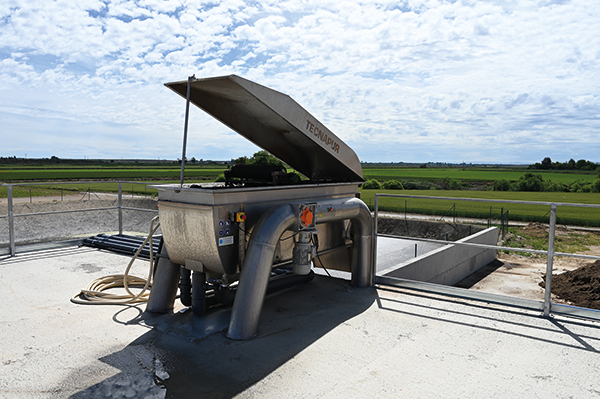
Pig slurry solid-liquid separator. Photo: Rotecna.
MANUAL LABOR
Our farms must appeal to the labourer to attract and retain talent. The facilities must be comfortable and safe and have a good level of automation to reduce the number of people needed to care for our animals. We must invest in training and assume that the new generations are digital natives and communicate better with digital devices, allowing us to control and improve the different consumption and processes.
ECONOMIC VIABILITY
To increase the economic profitability of our farms, we must first look at the main costs and try to reduce them. The main cost of pork production during the fattening phase is feed, which accounts for around 45% of the total price, so to improve farmers' economic benefits, it is essential to focus on reducing the cost of feed. Feed waste should be reduced, feed intake should be controlled and maximised to improve digestive performance and feed conversion rate, the diet should be adapted to the needs of the animals at each stage, environmental conditions should be kept within the animals' comfort zone, and consumption and growth data should be monitored and processed to notice problems and areas for improvement.
The second most considerable cost is piglets (approximately 30% of the total price), so the increase in live births per sow and the reduction in mortality have a very positive effect on the business. Sows should be inseminated at the right time and kept in optimal body condition, maximise their feed and water intake during lactation to increase milk production, minimise loss of body condition to improve their fertility and prolificacy of the next farrowing, ensure consumption of the necessary amount of colostrum and maximise milk intake of piglets, give milk starters to piglets in farrowing, have a sufficient lactation period, improve the transition from milk to feed after weaning, improve the transition between different diets during the transition phase and keep the animals in an environment adapted to their needs at each stage.
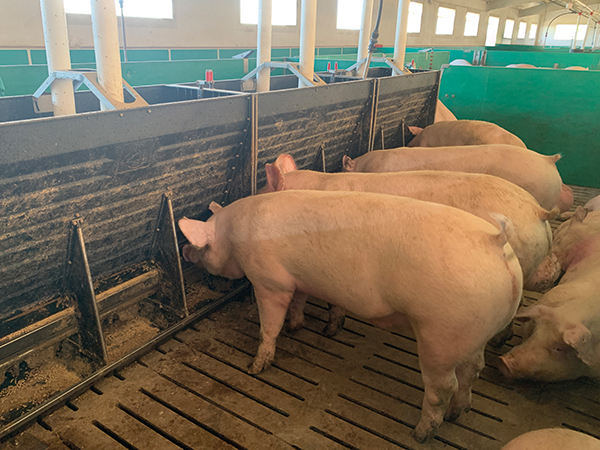
The main cost of production is feed during fattening. Photo: Rotecna.
ANIMAL HEALTH
Regarding what we can do at the farm level to maximise animal health and minimise the use of antibiotics, on the one hand, it is vital to keep animals free of infections, so it is essential to maintain very high levels of hygiene and biosecurity, both external (prevent infectious agents from entering the farm) and internal (that the all in - all out is rigorously complied with, and that mobility flows should always be from the most sensitive areas to the least sensitive, and never the other way around). On the other hand, the immune system of the animals must be strengthened by keeping them in optimal environmental conditions, both in terms of materials in their environment, as well as ventilation, temperature, humidity, availability of space and adequate access to water and feed.
In addition, we know that the increase in animal welfare, which is understood as reducing negative factors, is always accompanied by a rise in health and productivity, so it is an excellent investment. Not only does it not increase production costs, but it reduces them. As for the increase in animal welfare via the rise in positive stimuli, the producer can assume those that imply an increase in productivity. However, the costs of those inelastic to productivity should be considered by the consumers who want to pay for them.
CHANGES IN CONSUMER TRENDS
We must be aware of the importance of society's perception of pig farming in many aspects. Consumers are increasingly concerned about how their food is produced beyond food safety, giving a lot of importance to animal welfare, so we should go to systems that limit the use of cages and boxes in all phases of production, having sows in groups and loose pens, supplying them with enrichment material and giving them more space.
In addition to the interest in how the animals are raised, there is the concern about the environmental footprint of their production. We have the means to produce high-welfare and sustainable animals. Still, we must apply them and do everything to the best of our ability, improve the image of our farms so that people see modern and clean facilities, feel proud of what we do, share it and explain our story, including through our social networks. We must proactively communicate how well we do and that we continue to improve day by day. This way, we will counteract the campaigns against our industry so that consumers continue to trust us and consume pork, including the new generations.
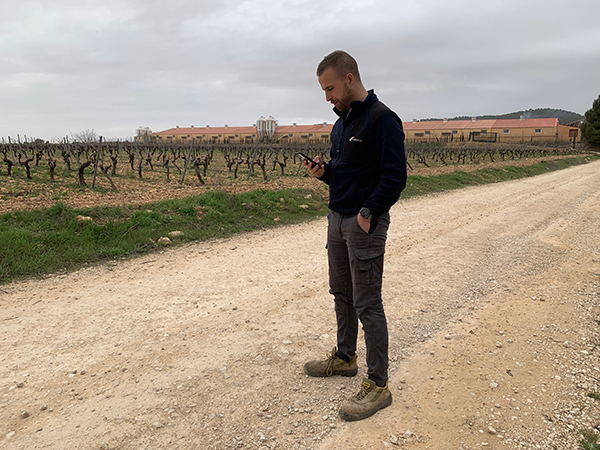
One of the keys to successfully implementing digital ecosystems is the transmission of information on user-friendly platforms. Photo: Rotecna.
FOURTH INDUSTRIAL REVOLUTION
We have the knowledge and technologies to face all these challenges. If we apply them, we will have a bright future for ourselves and our farms. We are on the verge of the fourth industrial revolution, where the integration of digital technologies and the convergence of the physical and digital worlds will significantly increase farmers' and animals' productivity.
The automation and sensitisation of the systems make it possible to automatically and reliably capture data that, integrated into common access platforms in the cloud, allows not only access and control of all the systems but also to process any of the data generated together with those of other systems, such as production and cost control. This opens up multiple possibilities to accelerate the continuous improvement of production based on analysing big data with artificial intelligence. This will make it possible to detect problems and areas for improvement and increase the efficacy of processes, systems, and equipment, allowing computerised systems to be autonomous based on their performance.
One of the keys to the success of implementing these digital ecosystems is the transmission of information on user-friendly platforms that facilitate the user experience and make it easier for farmers to apply them and take advantage of them. Our latest launches, such as the state detection system, are along these lines. Body by image, processed by artificial intelligence BodyCheck, which allows automating the feeding of sows in group gestation, and wireless sensors with autonomous communication of temperature, humidity, CO2, NH3, feed consumption and water consumption SensoriTronic, which offers the possibility of monitoring these parameters and sending warnings to our mobile phone if any incident occurs.
In addition, our product development department is working on different projects to continue implementing easy-to-use technologies, improving animal welfare and performance and making life easier for farmers with the benefits they will soon enjoy.







